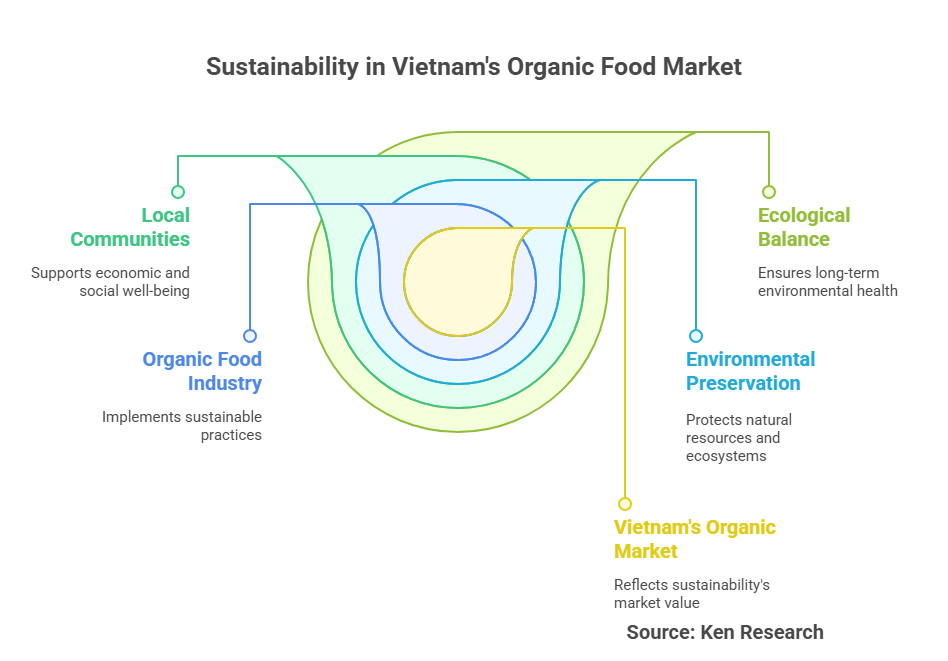Sustainable Fashion Meets AI: How Smart Technology is Reducing Fast Fashion Waste

Strong 8k brings an ultra-HD IPTV experience to your living room and your pocket.
The fashion industry’s rapid turnover cycle has fueled an unprecedented surge in textile waste. In the United States alone, consumers and brands generate roughly 186 billion pounds of discarded fabrics each year, much of it destined for landfills. Amid mounting environmental concerns and growing consumer awareness, sustainable AI fashion has emerged as a transformative solution. By harnessing artificial intelligence to predict demand, optimize resource use, and enhance product lifecycles, smart technology is beginning to reverse the tide of fast fashion waste. In this blog, we’ll explore how AI-driven innovations—from supply chain forecasting to virtual try-ons—are reshaping the industry, cutting waste, and paving the way for a more responsible, circular approach to style.
The Fast Fashion Waste Crisis
The term “fast fashion” conjures images of hyper-affordable trends, delivered rapidly from runway to retail. Yet beneath its convenience lies a darker reality: overproduction, under-utilization, and vast quantities of unsold or unwanted garments.
Every year, U.S. consumers and retailers contribute an estimated 186 billion pounds of textile waste to landfills. This figure stems from multiple sources: leftover inventory that never sells, garments returned and deemed unsellable, and individual shoppers discarding items they no longer want. The environmental toll is immense—unused textiles contribute methane emissions, leach harmful dyes into soil and waterways, and squander the water and energy invested in production.
Traditional forecasting methods, based on historical sales and seasonal projections, lack the precision required to match supply with actual demand. As a result, brands often err on the side of overproduction to avoid stockouts, inadvertently flooding the market and polluting ecosystems. Sustainable AI fashion addresses this gap by providing data-driven insights that align production volumes with real-time consumer preferences and external factors like weather or cultural events--minimizing excess and closing the loop on waste.
Smarter Supply Chains & Inventory Management
AI-Driven Demand Forecasting
At the heart of waste reduction lies the ability to anticipate what shoppers want, when they want it. Traditional planning cycles rely on quarterly or biannual trend reports—by the time garments hit shelves, consumer tastes may have shifted. Sustainable AI fashion platforms deploy machine learning models that ingest a mosaic of data sources: point-of-sale transactions, e-commerce clickstreams, social media sentiment, and even weather forecasts.
For instance, an AI system might detect a sudden spike in searches for lightweight rain jackets in a specific region following unseasonal storm predictions. By flagging this trend days or weeks ahead, brands can adjust production runs and inventory allocations—ensuring that retailers stock the right amount of product without overordering. Early adopters of AI forecasting report inventory reductions of up to 30%, translating directly into fewer unsold units and lower waste disposal costs.
Small-Brand Accessibility
While large retailers may have the resources to build bespoke AI tools, boutique and mid-sized labels have historically struggled to access similar capabilities. Today, many AI forecasting solutions operate on a subscription or software-as-a-service model, democratizing advanced analytics. Smaller brands can plug in their sales and supply data to receive demand projections tailored to their unique customer base.
This accessibility levels the playing field, empowering eco-conscious startups to operate with the same efficiency as industry giants. The result? A broader ecosystem of brands producing only what their customers will truly wear, reducing strain on raw materials and manufacturing infrastructure across the board.
Material Innovation & Selection
Selecting sustainable fabrics is another critical frontier for sustainable AI fashion. Beyond uptake and demand, AI can evaluate the environmental footprint of various textiles—factoring in water usage, carbon emissions, and end-of-life recyclability. By quantifying these metrics, brands gain a clear view of which materials offer the best performance with the lowest ecological impact.
Recent breakthroughs include:
-
Econyl: Regenerated nylon made from fishing nets and industrial plastic waste, offering identical strength and versatility to virgin nylon while diverting debris from oceans and landfills.
-
rPET: Polyester derived from recycled PET bottles, reducing reliance on fossil-fuel–based inputs and cutting energy consumption during fiber production.
-
SCOBY Leather: A vegan alternative created from fermented kombucha cultures, demonstrating how upcycled byproducts can yield durable, biodegradable materials.
-
Piñatex: A plant-based leather substitute made from pineapple leaf fibers, valorizing agricultural waste and supporting rural economies.
Brands like Adidas have taken note: partnering with Parley for the Oceans, they produce footwear whose upper panels are spun from reclaimed ocean plastics. By integrating AI to track material sourcing and lifecycle impacts, manufacturers can continuously refine their fabric choices—prioritizing closed-loop polymers and renewable fibers that further shrink the industry’s environmental footprint.
Waste Reduction in Design & Production
Generative Pattern Optimization
Cutting fabric waste at the source begins with smarter design. AI-powered generative design tools analyze hundreds of possible pattern layouts for a given garment size range, identifying configurations that maximize fabric utilization. In trials, some studios have reduced offcuts by as much as 20%, redirecting those savings to either smaller production costs or higher margins for sustainable materials.
Virtual Sampling & Digital Twins
The conventional sampling process—producing multiple physical prototypes, assessing fit, and then iterating—can generate significant waste. Sustainable AI fashion introduces digital twins: hyperrealistic 3D models of garments that allow designers to tweak patterns, adjust drape, and evaluate colorways virtually. These 3D dress forms respond to virtual fabric physics in real time, so teams can finalize designs without producing half a dozen sample pieces. Studies show development timelines shrink by nearly 50%, and sample-related waste plummets accordingly.
Real-Time Quality Control
Even in production, AI can enforce sustainability by catching defects early. Computer-vision systems—like those developed by Smartex AI—scan rolls of woven or knit fabric for flaws: misweaves, color irregularities, and tension inconsistencies. Detected defects trigger alerts before the fabric advances to cutting and stitching, preventing entire garments from being scrapped. By reducing the downstream impact of hidden imperfections, brands can maintain higher yield rates and further limit textile waste.
Digital Fashion & Virtual Try-Ons
Digital fashion heralds a future where consumers can “wear” garments in the metaverse or on social media without ever owning a physical item. Designers like The Fabricant create digital-only couture sold as NFTs, while mainstream retailers such as Target and Walmart offer augmented-reality try-on features.
These virtual samples serve dual sustainability goals: they reduce the need for physical prototypes, and they empower shoppers to preview looks on their own avatars, cutting return rates. Research indicates that products with AR try-on capabilities see return rates decrease by up to 35%, translating to fewer reverse logistics and less environmental burden from shipping and disposal. By weaving virtual try-ons into their digital storefronts, brands practicing sustainable AI fashion can delight customers while shrinking waste footprints.
Consumer Benefits & Circular Models
Circular Business Models
True sustainability extends beyond a garment’s first life. AI systems can track materials and product journeys to facilitate resale, recycling, or upcycling initiatives. Some platforms embed RFID or QR-code tagging, allowing customers to scan garments and view their full production histories—dates, locations, and materials. When an item reaches the end of its wearable life, data-driven recycling programs can recommend pathways: textile sorting for mechanical recycling, chemical depolymerization, or donation networks that direct usable pieces to new owners.
Personalized Shopping
Impulse purchases contribute significantly to wardrobe churn. By leveraging browsing behavior, purchase history, and social signals, sustainable AI fashion engines deliver personalized recommendations—prioritizing quality staples and versatile pieces over transient trends. This targeted curation reduces impulse buys and increases the likelihood that customers will cherish their purchases for years, rather than discarding them after a single season.
Platforms like Glance AI promotes sustainable AI fashion by curating smarter, seasonally relevant wardrobes that reduce impulse buys and promote conscious choices. By recommending pieces you’re more likely to keep and rewear, Glance helps cut return rates and fashion waste.
Visit Glance to learn more.
Transparency & Accountability
In an era of greenwashing concerns, transparency is paramount. AI-powered traceability tools map raw materials to finished goods, creating immutable records that brands and consumers can audit. Blockchain integrations further bolster credibility, ensuring that sustainability claims—organic cotton, fair-trade labor, or recycled content—are verifiable and tamper-proof.
Real-World Impact & Future Outlook
Early adopters of sustainable AI fashion are already reporting measurable gains. Brands using AI forecasting and optimization tools note up to 25% cost savings on excess inventory and a 15% reduction in overall waste disposal expenses. Heavyweight retailers who integrate virtual sampling see customer satisfaction rise, while return-rate declines directly lower carbon emissions from reverse logistics.
Consumer attitudes are shifting in tandem: surveys reveal that 82% of apparel buyers feel confident making purchase decisions based solely on digital samples. As AR, VR, and AI converge, the boundary between physical and virtual fashion will continue to blur—further diminishing the environmental toll of traditional sampling and trial processes.
Looking ahead, expect technologies such as waterless dyeing—where color is infused without liquid baths—and microbial dyeing, which uses bacteria to produce vivid pigments, to enter the mainstream. Augmented-reality dressing rooms may become ubiquitous, letting shoppers mix and match full collections before ever touching a fabric swatch. These innovations, underpinned by the data insights of sustainable AI fashion, promise a future where style and stewardship coexist seamlessly.
Conclusion
The era of throwaway fashion is drawing to a close. By embedding artificial intelligence throughout design, production, inventory, and consumer engagement, sustainable AI fashion offers a holistic blueprint for slashing waste and fostering a circular economy. From intelligent demand forecasting and material selection to virtual try-ons and post-consumer recycling, each layer of innovation drives us toward a more responsible industry—one where every garment tells a story of efficiency, transparency, and environmental care.
As brands and consumers embrace these AI-powered tools, we move closer to a world where fashion’s creativity shines without costing the earth. Explore AI-driven platforms today to build a wardrobe that reflects not just your personal style, but your commitment to a sustainable future.
Note: IndiBlogHub features both user-submitted and editorial content. We do not verify third-party contributions. Read our Disclaimer and Privacy Policyfor details.







